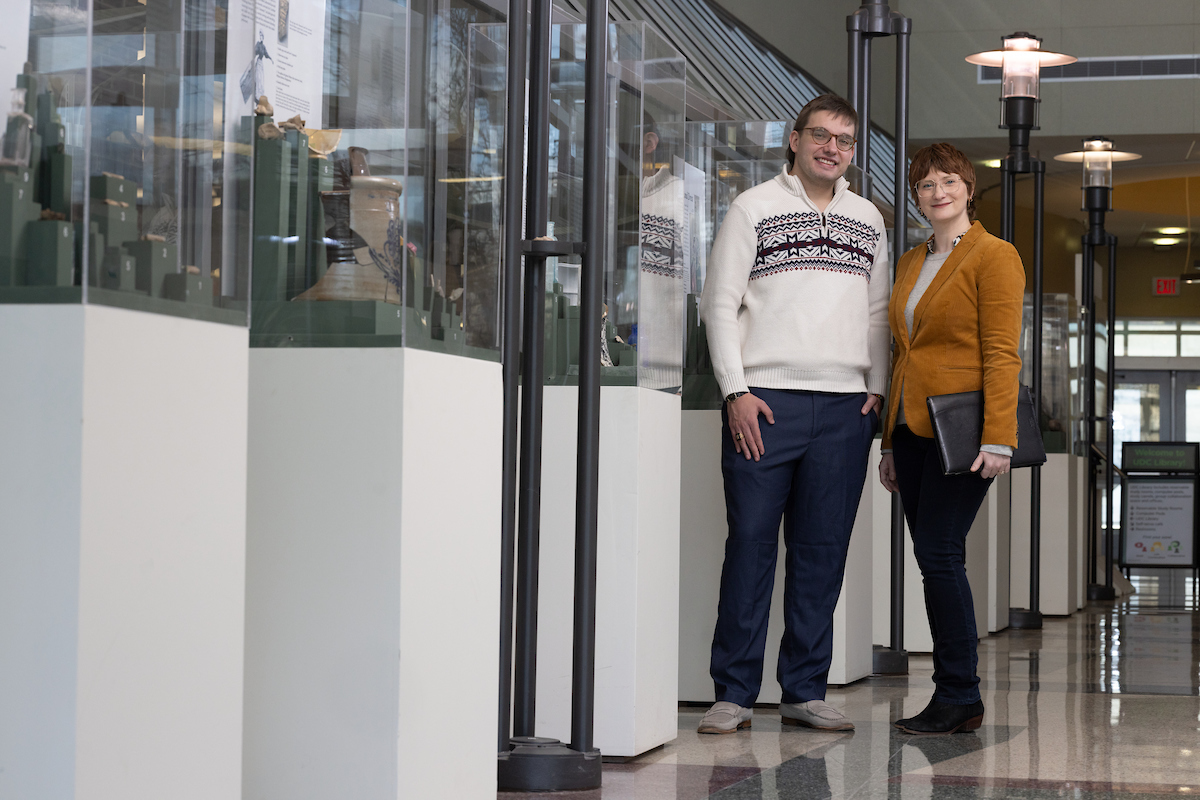Rethinking the glass ceiling
How one Binghamton University lab investigates equity for women of color in government.

“Who runs the world? Girls!” may be true for Beyoncé, but a team of researchers at Binghamton University is finding this isn’t typically the case for women of color, especially those in government.
Matthew Uttermark and Lauren Dula, both assistant professors of public administration, head the “Equity Lab” in the College of Community and Public Affairs. The lab is composed of the two researchers and a small consortium of master’s and doctoral students. Their most recent work centers on women from underrepresented racial and ethnic backgrounds in public office.
Uttermark, who earned his doctoral degree in political science from Florida State University, focuses on the power dynamics of national, state and local governments, as well as how racial inequality impacts the public policy of those institutions; Dula, who holds a doctorate in public affairs from the O’Neill School of Public and Environmental Affairs at Indiana University, Bloomington, focuses on gender, equity and diversity in the nonprofit and public sectors.
“It’s a great way for us to consolidate our interests and make something a little bit more long-lasting,” Dula says. “We’re putting this lab together to keep this type of research going.”
Using data collected from the American State Administrators Project, Uttermark and Dula looked at how women of color perceived their abilities to make decisions and communicate within their roles compared to white men, white women and men of color; the data from the survey, first collected in the 1960s, was a perfect source to work with.
Although the number of women of color in this kind of public service role is increasing, lab members found that they still experience less communication with management and are less in control of their departments than their counterparts.
“The group that had the most contact with their elected representatives or their staff was white men. But elected officials barely talk to women of color agency leaders at all,” Dula says. “White men and women feel they have power and a lot of control over things; administrators of color do not feel they have any. It’s this conundrum — ‘You’re not talking to me, but I still can’t step out of line.’”
Working with co-authors Francesca Bové, MPA ’21, who is now working on a PhD in community research and action, and Kamryn Scott ’20, MPA ’21, MS ’22, they published “Contact and Control: Engagement and Influence Among Women of Color State Agency Heads” in Public Administration Review to explore findings from the survey and to better understand women of color’s levels of discretion within their roles.
“From an academic standpoint, that’s kind of the interesting fact of the paper,” Uttermark says. “This previously discussed dichotomy of ‘If you’re left alone, you can pull the levers however you want as a bureaucrat’ totally breaks down when we start looking at women of color.”
This paper is the first in a series of three that looks directly at underrepresented women within government; the others will reflect on ethics within their workplaces and the effectiveness and impact of sexual harassment training on women of color.
In the long term, Uttermark aims to produce research that reduces inequity through public-facing recommendations. Dula agrees, though she also believes that it’s not always easy to make direct changes: sometimes, helping people look at things differently can make big differences.
Meanwhile, the research pair credits their students’ work with the inspiration to focus on this topic in the first place. The team also includes Loye Henry and Andrew Clark, both MPA students, and their newest member, Emily Chambers ’16, MSW ’22, who is now pursuing a doctorate in community research and action.
“More than anything else, we started having good students work with us, and that is what drove most of the process,” Uttermark says. “We have students coming in from vastly different lived experiences — from upstate, the city, Long Island, outside of the state and from international communities — that it’s just not possible to sit in our classes and avoid talking about how to make government a functional public service without acknowledging and having complex conversations on these topics.”

